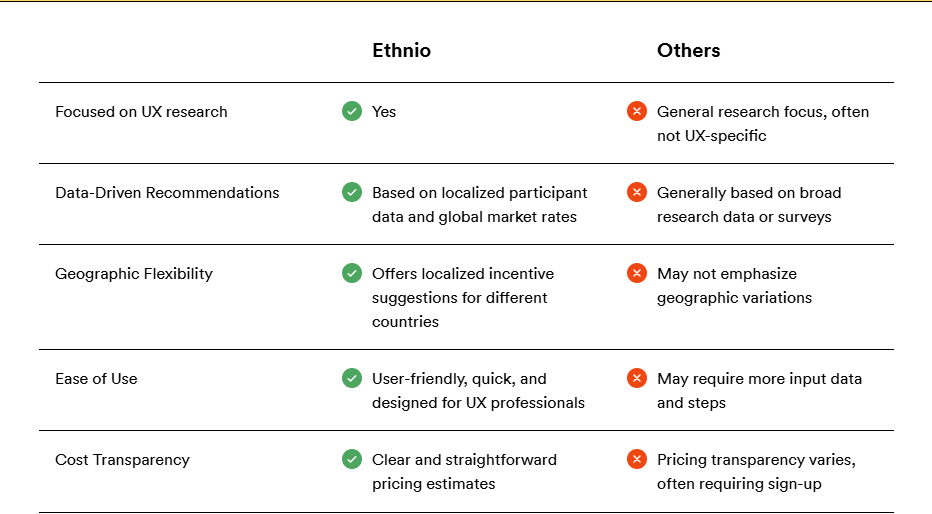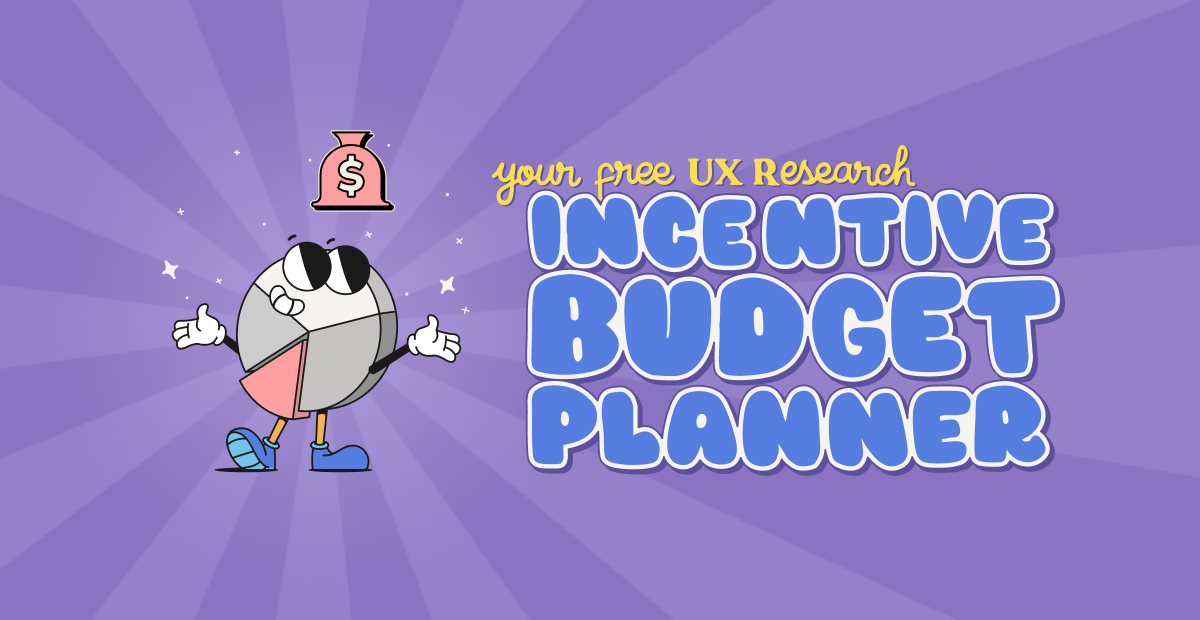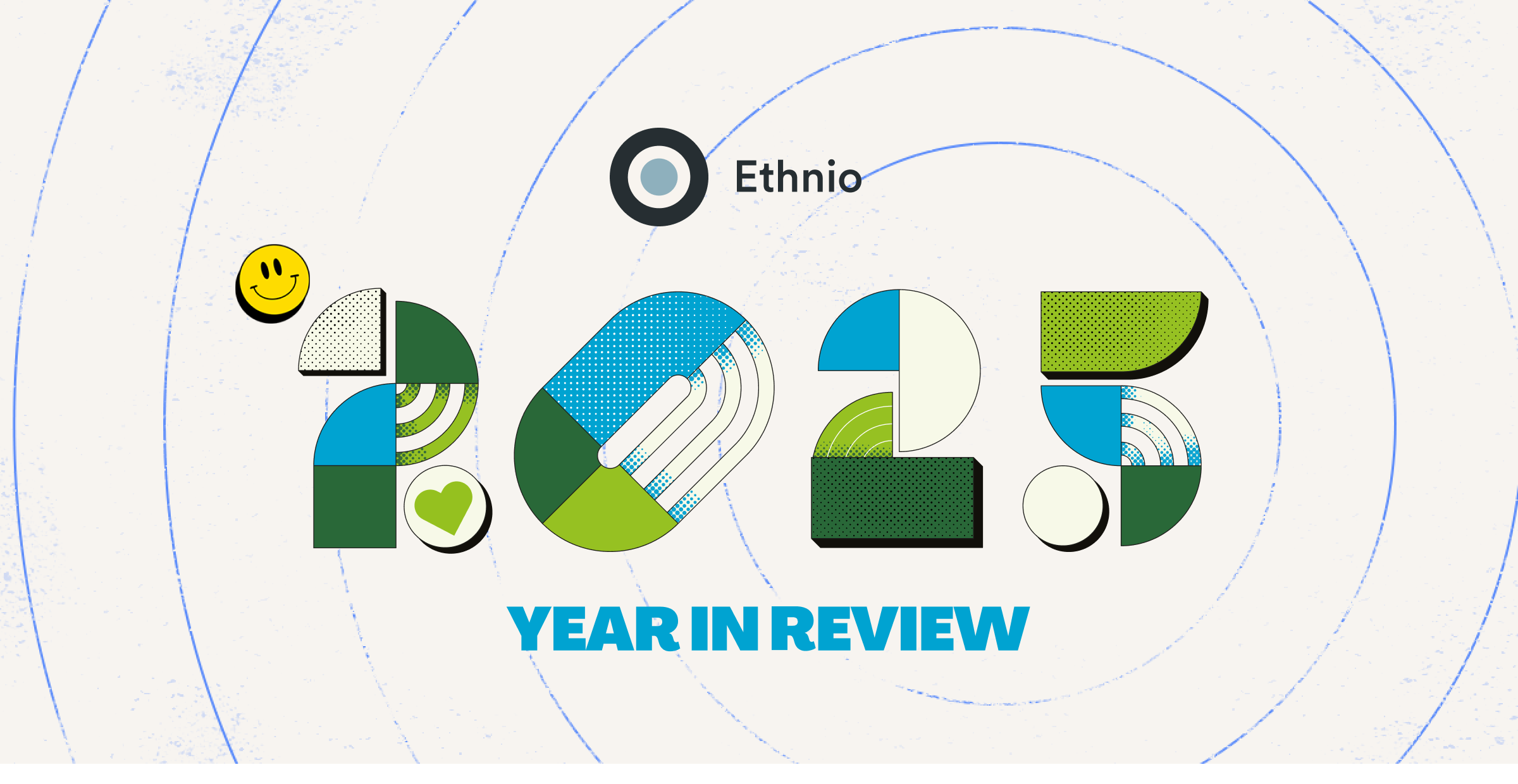Let’s talk budget planning for research incentives
Incentives are part of your broader user research budget, which also covers running enough studies, securing tools (like Ethnio) for your research stack, hiring if needed, and everything in between.
If you’re in Research Ops, Design, Product, or UX Research, you’re probably tasked with budgeting and making the case to leadership. Questions like:
How do I forecast my research incentive budget?
How can I help stakeholders estimate how much incentive budget they’ll need for surveys and interviews this quarter?
What’s the quickest way to plan and scale this process?
Sound familiar?
Here’s how to plan, forecast, and advocate for your incentive budget with a little (or a lot) of help from our free Incentive Budget Planning Tool.
Tap into global benchmarks from millions of data points with Ethnio, backed by 41,000 research studies, $20,799,749 in paid incentives, across 189 countries:
Two steps to build a research incentives budget that gets approved
With finite budgets and tight timelines, determining the appropriate incentive definitely matters when recruiting participants who can provide insights that shape key business and product decisions.
Once you know what to offer, the next step is getting internal buy-in.
Step 1: Figure out the incentive type (and how much) to offer
Incentives for UX research can be anything under the sun.
Each incentive type has tradeoffs.
Too little, and you risk no-shows or disengagement.
Too much, and you overspend (a fast way to lose stakeholder support).
Examples include:
Monetary compensation (cash, direct deposit, digital payments)
Gift cards (Amazon, Visa prepaid, etc.)
Charitable donations (choosing a nonprofit)
Discounts (product or service discounts)
Company swag (not ideal for external participants, but common internally)
No incentive (in rare cases)
Need help crunching the numbers?
Our guide, Calculate Research Incentives Without the Guesswork, pulls from $11.5M in incentives paid to 7M+ participants across 185 countries to help you benchmark and validate your incentive strategy.
And use our 📱 UX Research Incentive Calculator to plug in study parameters and get a baseline number.
Already have that sorted? Awesome! On to step two.
Step 2: Securing internal approval
Nothing kills momentum faster than an unclear or under-planned budget.
Our planner helps you:
Estimate total spend based on country and participant volume.
Account for the hidden costs (currency fees, taxes, payout differences).
Break down incentives by month, quarter, or study—however you report.
When your budget’s airtight, approvals move faster. And your research projects? Keep moving.
How to make the most of Ethnio’s UXR budget planner
Here’s how to plug in the right numbers to forecast your total incentive spend:
Start with your average research incentive amount.
Review that your location is correct and input your participants location.
🔥Hot tip
With Ethnio, you can pay participants in any currency using hundreds of secure, global payment methods. Give us a try for free.
Multiply by the expected number of participants per study.
Adjust for the number of studies or research frequency in a month, quarter, or year.
Use data to back your budget requests
Once you’ve got your numbers, apply the core formula:
Average incentive × number of participants × time period
Example:
$100 per participant
50 participants per month
Estimated incentive budget per month = ~ $4,000 to $7,500 USD
Variables that impact incentive amount:
No two studies are the same. Using the example above, the following factors will shift your total incentive budget:
Study type (e.g., interviews vs. surveys)
Audience complexity (e.g., B2B vs. general pop)
Location of participants (country, currency, cost of living). → Learn more about how participant location impacts incentive planning.
Timeline urgency (the faster the need, the higher the incentive)
Study frequency (monthly, quarterly, annual)
Common budgeting scenarios
Whether you're budgeting for one study or ten, the Incentive Planner calculates a “study total” up top — giving you a fast, clear view of overall cost and impact.
Here are some common considerations about incentives budgets:
One study: $75 × number of participants
Multiple studies: Multiply your total incentive per study × number of studies
Annual budgeting: Estimate total participants/year × incentive rate
Quarterly: Just multiply monthly total by 3
Ethnio’s incentive budget planner vs. the rest

Security & compliance that builds trust
Handling participant payments means handling sensitive data. With Ethnio, your recruiting, scheduling, and incentive workflows are backed by industry-leading security standards:
SOC 2 Type I & II certified
GDPR, CCPA, and HIPAA aligned
2FA, SSO, and user-level access controls
Global data storage in secure AWS regions
Whether you're paying 5 or 5,000 participants, you can confidently protect their information—and yours.➡️ Learn how Ethnio protects participant data.
Frame incentives as investments, not costs
Use simple visuals or tables to make budget approvals a breeze. Present strategically with clear benefits:
Better incentives = higher research quality
Predictability = no surprises in your budget
More participation = faster study cycles and more customer-centric outcomes
Leadership cares about ROI — good news: Ethnio makes it easy to prove
Our custom End-of-Year Report, tailored to your research ops, helps you plan budgets, advocate internally, and align teams. See what the EOY report includes here.
Use Ethnio’s Incentive Metrics to track exactly what you’ve paid out this year — then confidently forecast next year’s budget, justify your spend, and boost participant engagement.



